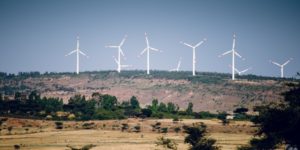
As the challenges of climate change come into clearer focus, international initiatives such as the Paris Agreement and the Sustainable Development Goals lay out ambitious targets to shift humanity’s course to a less-destructive trajectory.
But change requires financial investment as well as political will, and there’s a significant funding gap between what’s been committed and what’s actually required to achieve these aims. Private finance presents a powerful – and oft-cited – possibility to close the gap, with trillions of dollars of investment apparently available to be deployed for the purpose.
So why isn’t the money coming in yet? Given the nature of the private sector under capitalism, if these investment opportunities were available and viable, “you wouldn’t actually need to unlock them – the finances would already be flowing,” says Robyn Clark, a consultant for the Center for International Forestry Research (CIFOR) and lead author of a new policy brief and paper on the topic.
“That made me start asking the question: what’s hindering the sector from being unlocked in these types of investments, if we’re saying there’s trillions of dollars just sitting there and waiting?”
Read also: Green Climate Fund steps up to reduce deforestation and forest degradation
SCATTERED DATA
Embarking on the research, Clark quickly discovered one of the key barriers holding these investment flows back: availability of information. Even with her finance background, she and her co-authors “really struggled” to find an empirical evidence base or concrete information regarding projects, would-be investors and existing financial flows.
“So I can’t even imagine how difficult it is for projects or their investors to find the information,” she says. “The projects are saying ‘we can’t find money’, and then the investors are saying ‘we can’t find projects’.” The lack of information and transparency makes it difficult for investors and financial institutions to comprehensively adjudicate and mitigate risk.
This also makes the bigger picture – what financial mechanisms are out there, and what’s happening to achieve global goals – decidedly difficult to envisage and assess. “Everyone’s working on their own specific niche,” says Clark, and not enough reporting and information-sharing is happening to keep track of the cumulative effort. “You can’t actually pinpoint what resources are going where, especially given that most projects have multiple objectives, which can lead to overstated investment figures.”
While there’s plenty of momentum around the topic at the moment, Clark is concerned that decisions are being made on the basis of limited and incomplete data, which makes for a vulnerable financial system. “So there’s a ton of research still to be done.”
A key recommendation of the policy brief, then, is the establishment of a centralized convening body to connect people and resources. “I think that would be a great starting point,” says Clark, “and it would also help push the bigger policy changes and recommendations.”

PLAYING THE LONG GAME
One major policy shift that would help make low-carbon and environmentally friendly investments more attractive than others, entails valuing natural capital – the world’s stocks of natural assets, including geology, soil, air, water and all living things – more accurately.
When companies are not obliged to cover their negative externalities, such as the environmental and socioeconomic impacts of their production processes, “it creates a false economy,” says Clark. If policies took natural capital into account, many high-carbon activities would no longer be cost-effective, and investment would flow to lower-carbon activities instead, she says.
Policy and institutional shifts are also required to encourage long-term investment decision-making. Cost is frequently cited as a barrier to transitioning to a low-carbon economy. However, when a longer-term view is taken, a low-carbon model often works out just as cost-effective as continuing the status quo – if not actually cheaper, as one Citibank study found.
“So not only are you achieving those goals, and staying below the threshold that we need for climate change, but it’s actually more financially feasible as well,” says Clark. “It’s not that it’s not possible, it’s just that we’re still in the mindset of thinking about short-term profit.”
Relying on voluntary commitments to the global goals, she says, is not enough. “It requires a shift in policy to create a political and economic environment that really redirects the bulk of private finance. You can’t just rely on things like green finance or corporate social responsibility, which are maybe 1 percent of the whole market.”
Read also: What’s causing the holdup in REDD+ results-based finance?
A NEW PARADIGM
What this report calls for, then, is nothing short of a paradigm shift.
“We can’t operate under existing business models, continuing business-as-usual, and expect transformational change to happen,” says Clark.
To unlock private investment, she reiterates, “we just need to create the enabling conditions that would make that a viable choice over the environmentally degrading activities which are currently incentivized.”
And it’s possible, she says: “just not within the current system. We need to make major changes, in order to see major changes. We can’t do the same thing and expect different results.”
By Monica Evans, originally published at CIFOR’s Forests News.
For more information on this topic, please contact Robyn Clark at robynclark31@gmail.com.
This research forms part of the CGIAR Research Program on Forests, Trees and Agroforestry, which is supported by CGIAR Fund Donors.
This research was supported by USAID and UKAID from the UK government through their Knowledge for Forestry Program.











